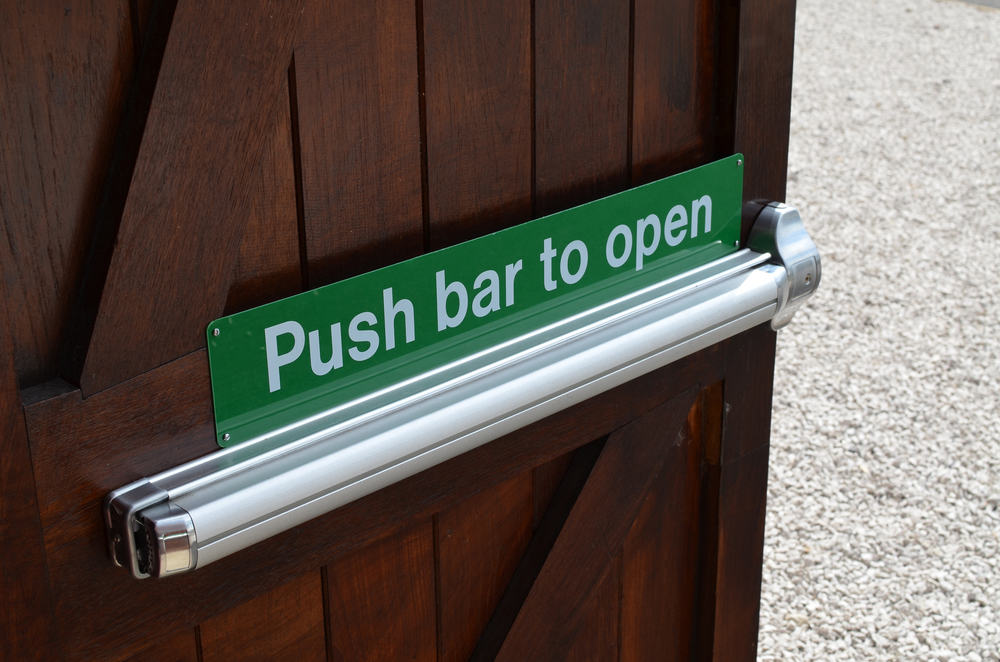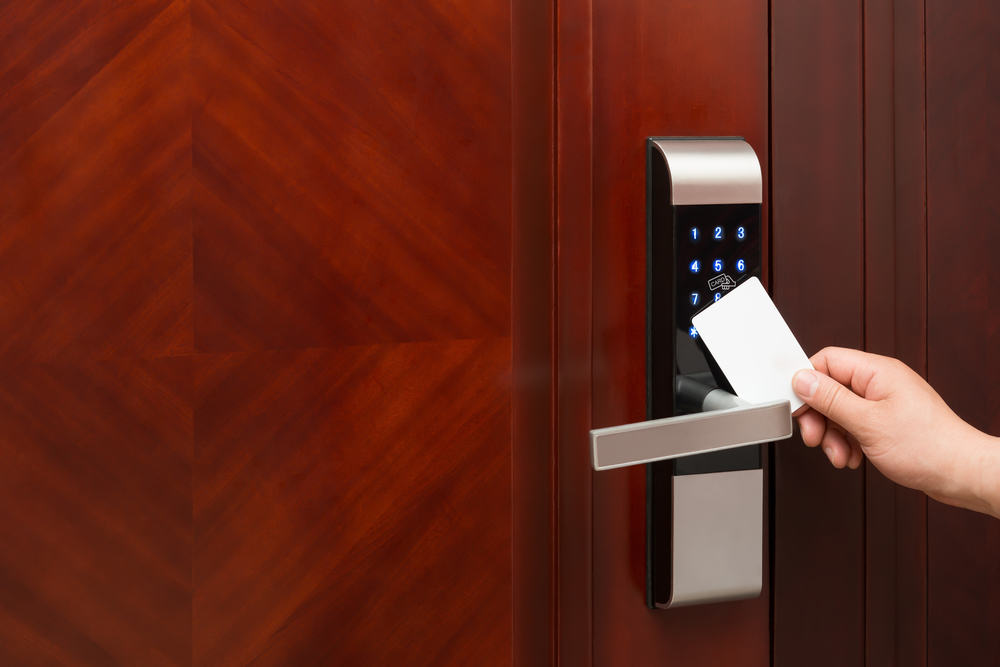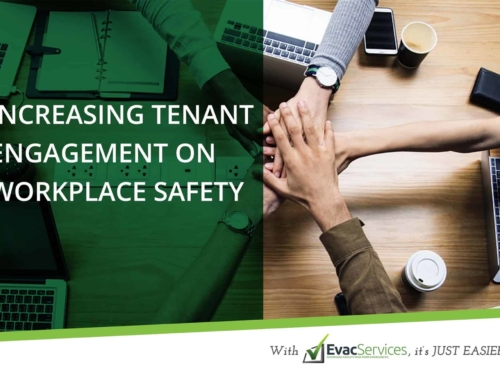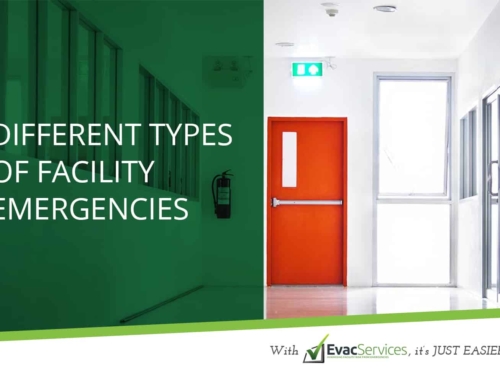Locks are meant to keep valuable items safe, but sometimes they may be what are putting your tenants in danger and making your evacuation plan ineffective. Make sure that your locks and security are set up not only to keep criminals out but also to allow those in your building to exit during an emergency safely.
Here are 4 ways that you can make sure that your locks are not impeding your evacuation route.
- Install Panic Bars
Even though you may need to prevent access to a section or room within your facility, there may be a way to increase the ease of egress. A panic bar is a very reliable door unlocking mechanism for emergencies. When pressure is applied to the bar, this retracts latches and bolts, which can remain secure on the other side of the door. If employees are injured or have their hands occupied carrying or assisting others, being able to open a door by leaning on it allows for quicker and safer exiting.
There is no need to turn a handle or knob, and the mechanism that opens the door extends along the entire length of the door. With so much of the area on the door dedicated to unlocking, it makes evacuation more straightforward.
- Remove Two-way Verification
When there is a lock on both sides of a door, requiring a key for both exiting and entering, it creates an evacuation hazard. If you must keep both the locks on either side of the door, it’s a priority to update your emergency plan with this information. Doors that cannot have two-way verification removed cannot be considered emergency exits.
Having to use a key or input an access code during an emergency increases the risk of employee harm. There are many ways that people can react to an emergency, and it’s likely that the complexity of getting a key out and using it in a lock or remembering a combination can dramatically slow down an evacuation, or even prevent it. Make sure that it is as easy to unlock doors necessary to exit the building.
- Give Access To Relevant Parties
If employees must work in a room that demands a two-way verification locking system, they need to have the necessary keys and codes to evacuate properly. Though it’s important to have an emergency management hierarchy, making one person or only a few individuals, responsible for opening doors during an emergency, creates unnecessary risk.
With mechanical locks, you can install a master key system so that a key that allows for egress will not open the door on the other side for ingress. Similarly, with electronic locks, you can have an evacuation code to, which will not work as an entrance code. This allows every worker to open the door in an emergency, without sacrificing the needed security.
- Use Redundant Unlocking Features
In some emergencies, the power can shut down rendering electronic locks completely useless. If the lock is not setup to unlock during a power outage for security reasons, there must be a mechanical override. Having two methods of entry for one door will decrease its overall level of security, but this is required if a lack of electricity is going to turn an exit into a door of death.
If you do not use redundant locks on potentially hazardous exit’s, then your lock will impede your chosen evacuation route. You must have reliable unlocking doors in order to consider it an fire escape. In case you are not willing or able to use two different systems simultaneously, you need new locks. You can simply replace the potentially dangerous lock with one that addresses the previous lock’s vulnerabilities.
Make sure you are using the right locks on the doors of your building. A safe evacuation is a quick evacuation, and that requires doors that open as fast as possible. Take out the guess work in your safety planning and protect yourself, your workers, and your business by creating a culture of safety.
Do you need help in creating an evacuation plan for your facility? Complete the form below, and our experts will reach out to you shortly to share ideas on how you can keep your tenants safe in an emergency.
[wpforms id=”1334″ title=”true”]







